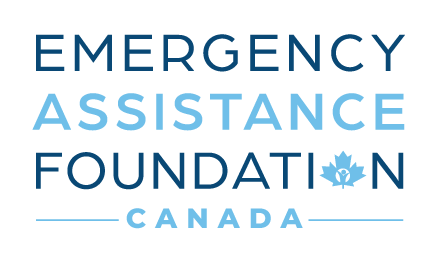
How to Define Your Fund’s “Charitable Class”
June 10, 2019
How Third-Party Disaster Relief Funds Can Help Combat HR, PR and Legal Headaches
July 8, 2019Your boss just asked if you’d be willing to be nominated for a seat on the board of the local YMCA. You are flattered to be asked. You enjoy working out at the Y. You think this is great – maybe board members get to attend classes for free! You tell your boss you are interested, and a meeting is set up with the YMCA executive director.
As the meeting draws closer you realize you are unsure about what it means to be a board member. What exactly are the roles and responsibilities of a board member?
Your first responsibility is to find out the expectations of a board member and ensure you can meet those expectations. Learn all you can about the organization. Are their mission and values consistent with yours, such that you will become a passionate advocate for the organization? As a board member you’ll be asked to make your service to this organization your priority for the next several years.
You have a responsibility to give them your time, talent and treasure, the three “T’s.” What is the time commitment of a board member? You have a responsibility to prepare for and attend all board meetings. In addition to board meetings, both in person and remotely via conference calls, a board member is expected to participate in committee meetings/calls. There may also be events and community activities that board members are asked to attend. Understanding the time commitment prior to agreeing to serve is important. If a board member does not fully participate, they let their fellow board members and the organization down.
Giving your talent is your next responsibility. A well-planned board recruitment strategy results in a diversified board with skillsets needed to fulfill the mission of the organization. That likely means board members with finance, investing, communications, marketing, legal, human resource, strategic planning, event planning, fundraising, technology and/or programming expertise are needed at various times. When you meet with the organization’s director prior to agreeing to be nominated, determine if your expertise fits with a skillset needed on the board.
The last “T” represents your treasure or the financial commitment that comes with serving on the board. Every non-profit expects the board to take a leadership role in fundraising. Asking others to give without setting the example is difficult and may make the potential donor question why they should give if the board is not giving. Some boards have a minimum donation they ask from all board members. Others may ask each board member to give to their personal capacity.
So: you’ve met with the executive director, you know you can meet the expectations and enthusiastically agree to serve. Your first meeting is approaching, and in reviewing the pre-meeting materials, you feel a bit overwhelmed and start to doubt yourself. The financial statements look like they are in a foreign language. There is an investment presentation included that is confusing. The agenda includes program topics you were not even aware were part of the organization’s offerings. Don’t worry there is a board orientation before your first meeting. And you have been assigned a mentor who has requested a call prior to the meeting.
Set up a time to speak with your mentor. They will help you navigate the board meeting and help you feel comfortable. Also, you can ask them questions prior to meeting that you might be afraid to ask during the meeting.
Your First Meeting
Prior to your first meeting review all the materials provided in advance. Ask your mentor or the executive director any questions. Attend the orientation where you will likely hear about the history of the organization, review the financial statements, be provided with key documents such as the by-laws and key policy statements, meet staff and hear about which areas they are responsible for, and meet the officers of the board. The officers may explain the committee structure and their responsibilities. They may invite you sit in on the committees so you can decide which committees you would like to serve on. Or they may appoint you to a committee that fits your skillset.
Hopefully during the orientation, they will explain your roles and responsibilities. The primary legal responsibility of every board member is referred to as “fiduciary responsibility.” A board member should never do anything this or may be perceived as violating fiduciary responsibility or duty. It is your responsibility as a board member to serve as a fiduciary of the organization to ensure to the best of your ability its long-term viability.
The Cornell Law School Legal Information Institute website (http://www.law.cornell.edu/wex/fiduciary_duty) defines fiduciary duty as follows:
A fiduciary duty is a legal duty to act solely in another party’s interest. Parties owing this duty are called fiduciaries. The individuals to whom they owe a duty are called principals. Fiduciaries may not profit from their relationship with their principals unless they have the principals’ express informed consent. They also have a duty to avoid any conflicts of interest between themselves and their principals or between their principals and the fiduciaries’ other clients. A fiduciary duty is the strictest duty of care recognized by the US legal system.
In your situation as a board member, you are a fiduciary for the organization who is the principal in the above definition. Whenever you are acting as a board member, you should ask yourself if you are acting solely for the benefit of the organization.
Most well-run organizations conduct their meetings in accordance with parliamentary procedure outlined in The Eleventh Edition of Robert’s Rules of Order Newly Revised. Often an organization’s by-laws specify that meetings and conventions be conducted in accordance with the latest edition of Robert’s Rules of Order. Prior to your first meeting, familiarize yourself with parliamentary procedure.
Familiarity with the basic parliamentary rules for meetings will make any new board member more comfortable in making motions, understanding when a “second” is required for a motion, understanding the rules of debate, and knowing how to end them by “calling for the question,” etc. Sounds like a foreign language, but once you understand the basics as outlined in the above short book, you will understand how to take part in the meetings more effectively.
Staff vs Board Member Responsibilities
Strong committee and board performance results from a partnership between staff and volunteer board members. Effective organizations have a clear understanding of their respective roles as they move the organization forward. To be clear, the only staff member who reports directly to the board is the executive director.
Generally, the board is responsible for hiring the executive director, providing feedback to the executive director, communicating expectations, conducting annual personnel evaluations, and rewarding their performance. When external issues arise, the board has the role of analyzing the situation and working with the executive director to handle public relations and respond as one voice supporting the executive director.
The key to success in the leadership team of the executive director and the board is the ability to understand the expectations of each other and to communicate frequently. Joint responsibilities include establishing the priorities of the organization based on the overall strategic plan. They also include defining the who, what, when, where and how’s of execution of the priorities. Jointly evaluating the activities and results is also important. Was the latest project worth the effort?
The best way to build relationships is to spend time together, even if it is telephonically. No surprises builds trust. Things will not always go as planned, but if the board member is kept informed, both parties can use their specialized knowledge to resolve issues together.
Volunteers have much to learn from staff, and staff have much to learn from volunteers. Each is in their position because of their specialized experience, knowledge, and skills. Many board members have experiences gained in the for-profit world that are applicable in the not-for-profit world. However, board members need to understand that they are not the CEO/CFO or chief anything of the non-profit and that the organization’s staff are not their staff. Mutual respect is critical for a successful board and staff partnership. Both groups are passionate about the mission of the organization, and only by working together can they fulfill the mission. The following chart clarifies board vs staff responsibilities:
Board Responsibilities |
Staff Responsibilities |
| Manage the strategic decision-making process |
Provide information to assist in the decision-making process |
| Review data | Gather, analyze and present data |
| Set priorities and establishes goals and objectives |
Develop action plans to implement goals and objectives |
| Establish relationships and seek support from external stakeholders such as donors and related organizations |
Provide research and document results of those solicitations and relationships |
| Evaluate risk and review policies and procedures for compliance with legal and regulatory requirements |
Establish procedures and systems for carrying out activities |
| Approve budgets | Recommend allocation of resources |
| Monitor progress and quality of programmatic and administrative support activities |
Direct day-to-day operations |
| Recruit, motivate, and thank volunteers | Supervise staff and volunteers |
| Establish criteria for measuring the effectiveness and efficiency of the activities |
Present data and recommend revisions to programming |
Remember, your responsibility as a board member is to help set the strategic direction of the organization and oversee the financial results and controls—not to manage day-to-day operations. Your role is to develop the strategy, policies and procedures for the staff to execute. Stay out of the weeds and focus on the big picture and mission of the organization. Now go forth and serve, moving your organization forward.
Click here to view the original article
Author:
Douglas Stockham
EAF President
Doug@eafrelief.ca




